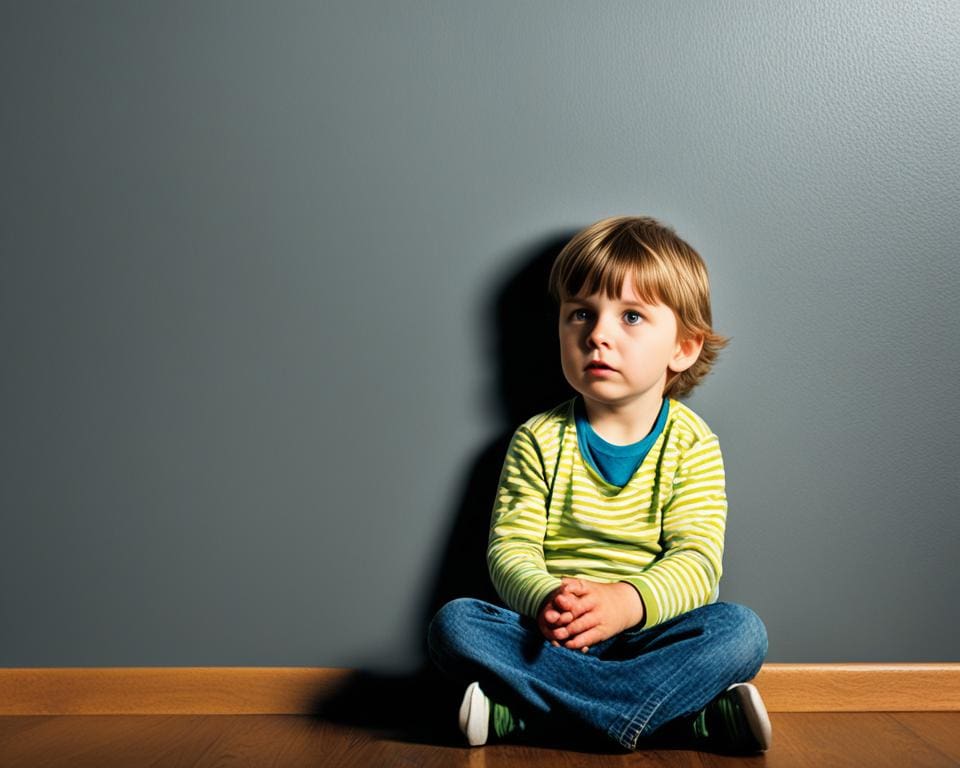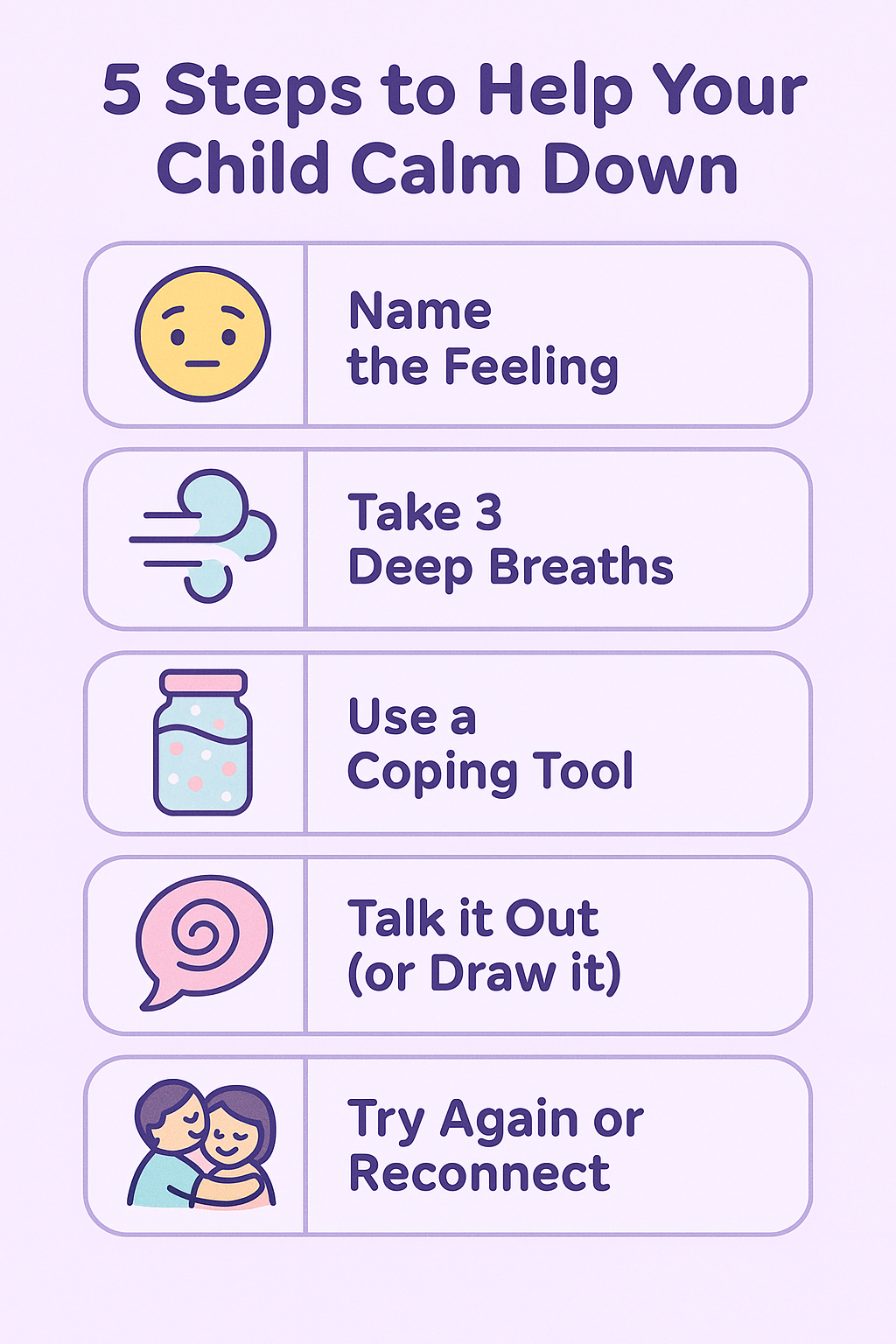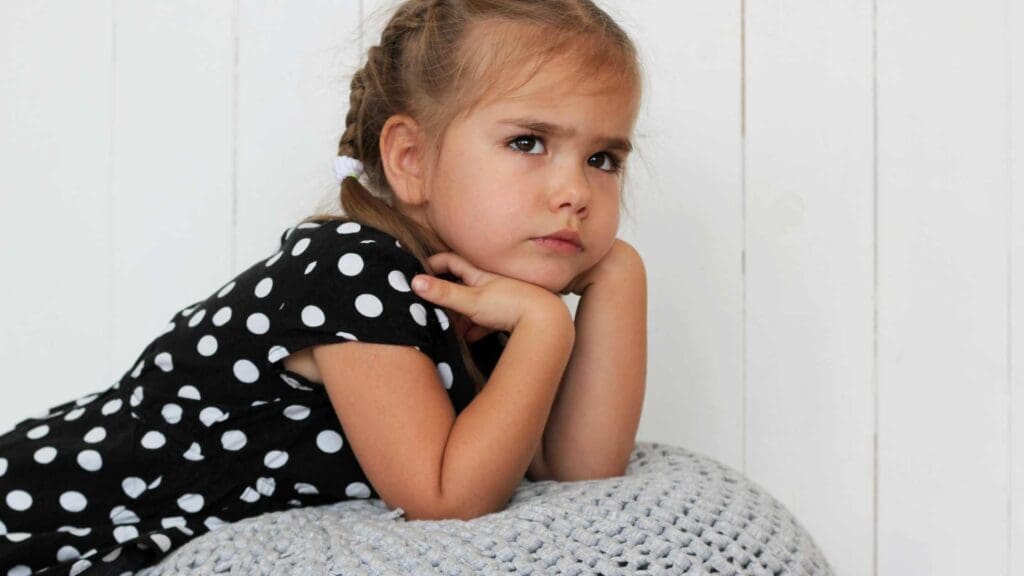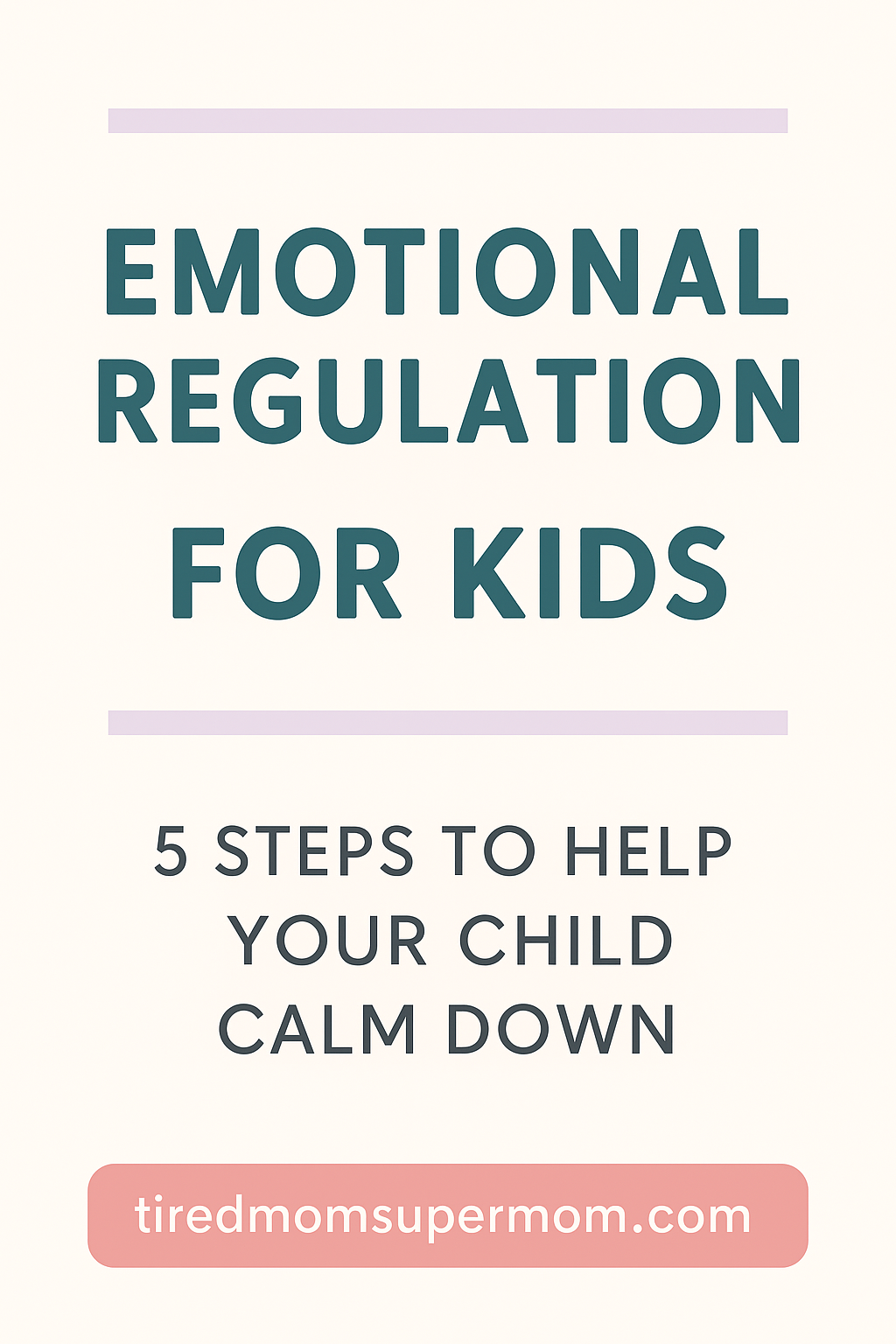15 Easy Engaging Emotional Regulation Activities for Kids
Emotional regulation is a critical skill for young children, as it helps them manage different emotions and navigate social interactions effectively.
Teaching kids emotional regulation skills is essential for their mental health and overall emotional development.
Here are some fun and practical emotional regulation activities that parents can use to help their children develop these important skills.
Heads up: This post may include affiliate links. As an Amazon Associate, I earn from qualifying purchases—at no extra cost to you. Full privacy policy and disclosure here.

Why Emotional Regulation Activities Matter
If you’ve ever watched your child spiral into a meltdown because their pancake broke in half, then you know just how big small problems can feel to little people. Emotional regulation is the ability to recognize, express, and manage emotions — and it’s one of the most important skills your child will ever learn.
But here’s the kicker: kids aren’t born with emotional regulation skills. They need to be taught. Just like we teach them to read or ride a bike, we need to teach them how to calm their bodies, label their feelings, and express themselves in healthy ways.
That’s where these emotional regulation activities for kids come in. They’re fun, easy to implement at home, and they work — even for strong-willed or sensitive children.
Check out Positive Parenting Solutions’ online course – only $9.99 a month!
Fun Games and Activities for Emotional Regulation
1. The “Feelings Face” Mirror Game
This activity helps kids learn to recognize and name emotions — the foundation of emotional regulation.
How to Play:
- Grab a mirror and sit with your child.
- Take turns making “angry,” “sad,” “excited,” and “scared” faces.
- Label the emotions and talk about times you felt them.
🧠 Why it works: It boosts emotional literacy, so kids can identify what they’re feeling — a key step in calming down.
2. Calm-Down Jars
Calm-down jars (also called glitter bottles) are a sensory tool to help children slow their breathing and focus.
What You Need:
- Water bottle
- Clear glue
- Food coloring
- Glitter
🛒 Shop a pre-made calm-down jar or make your own!
🧠 Why it works: Watching the glitter settle helps reset overwhelmed brains and regulate the nervous system.
3. Emotion Charades
Acting out emotions (without words) is a silly and low-pressure way for kids to practice identifying and empathizing with different feelings.
Emotion Ideas:
- Embarrassed
- Proud
- Frustrated
- Shy
- Brave
🧠 Bonus tip: Keep a printable emotion wheel nearby for reference.
📥 Download our Emotion Charades Game PDF
4. The “Turtle Technique”
This is one of the classic emotional regulation activities for kids, especially for preschoolers.
How It Works:
- Teach your child to “go in their shell” when they feel overwhelmed: Stop, take deep breaths, and think.
- Use a turtle puppet or stuffed animal for role-play.
🛒 This turtle puppet is perfect for modeling the steps.
🔗 Read how to soothe a crying child gently →
5. Breathing Buddies
Lay down with a stuffed animal on your child’s belly and breathe together. Watch it rise and fall.
🧠 Why it works: Visual feedback helps children learn belly breathing — a simple but powerful calming tool.
🛒 Weighted plush animals add a soothing sensory component too!
6. Feelings Check-In Chart
Create a morning and evening routine where kids mark how they’re feeling.
🛒 Or try this magnetic feelings board — great for visual learners.
💬 Talk through each feeling — no need to fix it, just validate and connect.
🔗 Why Positive Parenting helps with this →
7. Yoga and Movement Breaks
Gross motor movement burns off stress hormones. Think:
- Animal walks (crab, bear, frog)
- Freeze dance
- Yoga poses (try the “bee” or “tree” pose)
🛒 Yoga cards for kids make this easy to do at home.
🧠 Add calming music for extra benefit.
8. Story Time With a Twist
Read picture books about emotions — then act them out or ask questions:
- “How did the character feel?”
- “What could they have done differently?”
📚 Some great picks:
- In My Heart by Jo Witek
- The Color Monster by Anna Llenas
🛒 Find these and more on our recommended booklist
9. Scribble Out the Stress
Art is a powerful outlet for children. Provide markers and let them “draw their feelings.”
🛒 Keep large drawing pads like this on hand for daily use.
💡 Try “color your anger” or “draw your calm place.”
10. Role-Playing Scenarios
Create little skits: “Your toy broke,” “Someone said something mean,” “You lost a game.”
🤹 Act out healthy vs. unhealthy responses, and have your child take the lead.
🔗 What to say instead of “Good job” →
11. DIY Coping Skills Toolbox
Let your child create a personalized box filled with:
- Squeeze ball
- Fidget toy
- Emotion cards
- Breathing straw
- Mini notebook
🛒 This sensory tool kit is a great starter.
🧠 When kids know where to turn, they feel more in control of big emotions.
12. The “5-4-3-2-1” Grounding Game
A simple mindfulness game for meltdowns. Ask:
- 5 things you see
- 4 things you can touch
- 3 things you hear
- 2 things you smell
- 1 thing you taste
🔗 Try this during moments of self-doubt too →

13. Emotion Scavenger Hunt
Hide emotion cards or toys around the house and call out feelings: “Find something that’s angry!”
🧠 This builds emotion recognition skills through movement and play.
14. Guided Visualizations
Close your eyes and imagine “a safe place,” “floating on a cloud,” or “your happy memory.”
🎧 Try guided kids meditations from Mindful.org or GoZen.
15. Positive Discipline and Reflection Time
Use calm moments to reflect:
- “What helped you feel better?”
- “What could we try next time?”
🧠 You’re building resilience — not just managing behavior.
🔗 Read our full Positive Parenting Solutions review →

FAQ: Emotional Regulation Activities for Kids
What age should I start teaching emotional regulation?
You can begin with toddlers! Even simple games like “name that feeling” help lay a strong foundation.
What if my child refuses to participate?
Don’t force it. Stay playful and model the activity yourself — curiosity usually follows.
How often should we practice emotional regulation activities?
Aim for one small moment a day. Routine builds confidence and success over time.
Are these activities helpful for neurodivergent children too?
Yes! Just adapt as needed. Visuals, timers, or tactile tools may be especially effective.
What are signs my child is improving in emotional regulation?
Fewer meltdowns, quicker recovery after upset, and better ability to verbalize emotions are all great signs of growth.
✅ Grab Your Free Emotional Regulation Checklist!
Looking for a simple way to practice emotional regulation every day?
✨ Download this FREE printable checklist with 15 fun, calming activities you can start using with your child today — no special tools required!
Final Thoughts
Emotional regulation doesn’t develop overnight. But with consistency, patience, and a toolbox of activities like the ones above, you’re helping your child build lifelong emotional intelligence — one moment at a time.
🌈 Don’t forget to grab your free printable checklist — it’s an easy way to start this journey today!
Struggling with meltdowns and big emotions? Save this pin and discover 5 easy emotional regulation activities for kids — plus a free printable checklist to help your child build calm-down skills every day!

